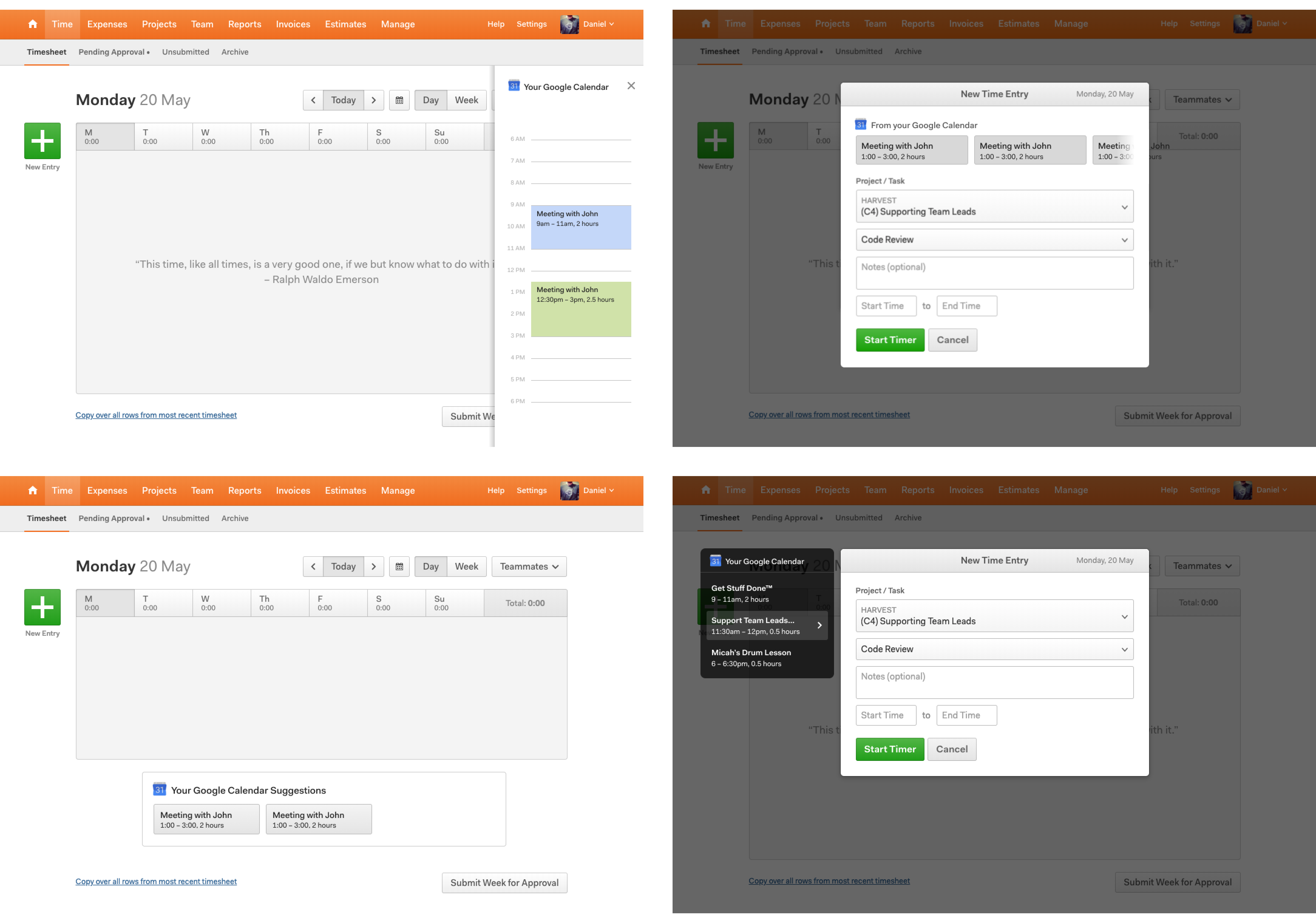In an ongoing effort to encourage effective time tracking, Harvest uncovered a compelling insight during research: nearly 50% of customers in a specific segment were concurrently using their calendar app alongside Harvest for time tracking. Recognizing this pattern, we initiated a six-week project aimed at simplifying the process of seamlessly transferring calendar events into customers’ Harvest timesheets.
For this project, I was tasked with leading the team tasked with creating this new feature. My responsibilities encompassed guiding the squad through the development process, creating detailed mockups, and prototyping user flows. Additionally, I actively collaborated with engineers to ensure a seamless implementation phase.
Problem
As the demands of busy schedules intensify, carving out dedicated time to fill out a timesheet becomes increasingly challenging. The typical scenario involves individuals transitioning rapidly between tasks, leaving their timesheets neglected. When people finally sit down to record their time, the arduous task of recollecting specific details and reconstructing days or weeks of work poses a significant hurdle.
Remembering Time is Difficult
- Objective: Mitigate the challenge of remembering tasks and activities.
- Solution: Develop a mechanism to simplify the process of entering time entries from calendar events.
Streamline creating time entries from calendar events
- Objective: Empower customers to seamlessly integrate calendar events into their Harvest timesheet.
- Solution: Introduce a feature that connects with Google or Outlook.com calendar accounts, automatically pulling events into the timesheet for easy entry.
Challenges
- Integrating with 3rd Parties: Ensuring seamless integration with external calendar platforms through APIs.
- Ongoing Commitment to Maintenance: Upholding the commitment to regularly update and maintain the system.
- Decision-Making for System Evolution: Making decisions on system evolution, including potential integrations and enhancements.
Approach
The project unfolded with a well-defined vision aimed at tackling the identified challenges head-on.

In the initial phase, the engineering team dove into technical discovery and integration with Google and Outlook.com calandars, while my focus shifted towards materializing concepts into mockups and clickable prototypes.

Over the span of two weeks, a continuous cycle of development, presentation, and refinement ensued as I iteratively shaped the mockups and prototypes. These iterations were subjected to design reviews, incorporating valuable feedback to enhance the user experience. The culmination of this design process involved subjecting the finalized prototype to thorough scrutiny, garnering the approval of the company founder and cementing the chosen approach.

Post-approval, my role expanded to actively contribute to the front-end engineering efforts, in the creation of HTML, CSS, and JavaScript components. As the project neared completion, I coordinated quality assurance efforts, created marketing materials to showcase the new feature, and helped facilite the seamless launch of the new feature.
Tracking Progress
The integration allowed customers to create timers based on Google and Outlook.com calendar events. Setting a goal of 10% of timers for this audience segment originating from calendar events in three months, we not only met but exceeded expectations, achieving 17% of timers started from calendar events.
Future
The successful implementation of the calendar integration feature provides customers with a faster and more user-friendly approach to time tracking. As an evolving project, we remain committed to continuous iteration, adaptation, and the extraction of valuable insights from the ongoing process.